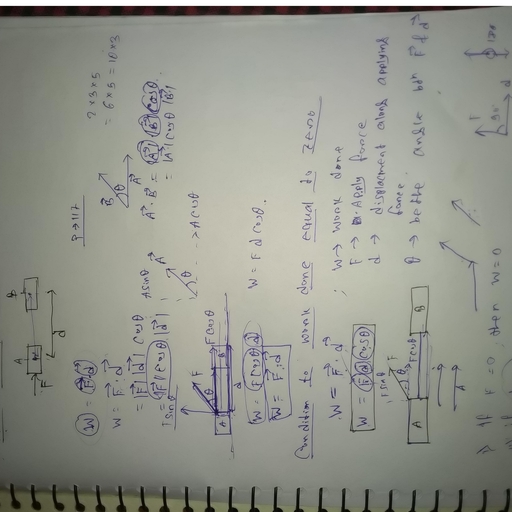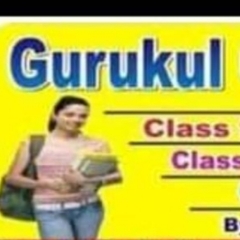Question 1 :
State whether true or false :<br>The hollow shaft is much stronger than a solid shaft of same mass, same length and same material.
Question 3 :
Let ${Y}_{S}$ and ${Y}_{A}$ represent Young's modulus for steel and aluminium respectively It is said that steel is more elastic than aluminium. Therefore, it follows that
Question 4 :
One end of a uniform rope of length L and of weight w is attached rigidIy to a point in the roof and a weight w$_1$ is suspended from its lower. If s is the area of cross-section of the wire, the stress in the wire at a height $\displaystyle \frac{3 L}{4}$ from its lower end is:
Question 5 :
The ratio of lateral strain to the linear strain within elastic limit is known as:
Question 6 :
Energy per unit volume in a stretched wire is equal to
Question 7 :
A wire suspended vertically from one of its ends is stretched by attaching a weight of $200N$ to the lower end. The weight stretches the wire by $1mm$. Then the elastic energy stored in the wire is
Question 8 :
Change in the shape of a body caused by the application of a force (stress) is called as :<br/>
Question 9 :
For which of the following is the modulus of rigidity highest?<br>
Question 10 :
A wire ($Y=2\times {10}^{11}N/m$) has length $1m$ and area $1m{m}^{2}$. The work required to increased its length by $2mm$ is
Question 11 :
Consider the following two statements A and B and identify the correct answer.<br>A) The product of bulk modulus of elasticity and compressibility is one.<br>B) Tangential stress applied on the body only produes change in shape but not in size.
Question 13 :
The elongation produced in a copper wire of length 2m and diameter 3mm, when a force of 30N is applied is [Y$=$1x10$^{11}$N.m$^{-2}$]
Question 14 :
A wire made of the material of Young's modulus $Y$ has an stress $S$ applied to it. If Poisson's ratio of the wire is $\sigma$, the lateral strain is:<br/>
Question 15 :
Assertion: Brittle materials such as concrete or carbon fiber do not have a yield point, and do not strain-harden.
Reason: The ultimate strength and breaking strength are the same for any brittle material.
Question 16 :
When a sphere of radius $2 cm$ is suspended at the end of a wire, elongation is $'e$'. When the same wire is loaded with a sphere of radius $3cm$ and made of the same material, the elongation would be :
Question 17 :
The average depth of Indian ocean is about $3000\ m$. The value of fractional compression $ \dfrac{\Delta V}{V}$ of water at the bottom of the ocean is:[Given that the bulk modulus of water is $2.2\times 10^9\ Nm^{-2}$, $ g=9.8\ ms^{-2}$ and $\rho_{H_2O}=1000\ kg.m^{-3}$]
Question 18 :
Two wires of different materials each of length $l$ and cross sectional area ‘$A$’ are joined in series to form a composite wire. If their Young’s modulii are $Y$ and $2Y$, the total elongation produced by applying a force $F$ to stretch the composite wire.
Question 19 :
Assertion (A) : The elastic potential energy of a spring increases when it is elongated and decreases when it is compressed.<br>Reason (R) : Work done on spring is stored in it as elastic potential energy.
Question 20 :
A $10 \ meter$ long thick rubber pipe is suspended from one of its ends. The extension produced in the pipe under its own weight will be :$(Y=5\times10^{6}N/m^{2}$ and density of rubber =$ 1500 \ kg/m^{3}$)<br/>
Question 21 :
A metal wire of length $L_1$ and area of cross section A is attached to a rigid support. Another metal wire of length $L_2$ and of the same cross-sectional area is attached to the free end of the first wire. A body of mass M is then suspended from the free end of the second wire. If $Y_1$ and $Y_2$ are the Young's moduli of the wires respectively, the effective force constant of the system of two wires is
Question 22 :
A steel ring of radius $r$ and cross sectional area $A$ is fitted on to a wooden disc of radius $R(R> r)$. If Young;s modulus be $Y$, then the force with which the steel ring is expanded, is
Question 23 :
When a wire is subjected to a force along its length, its length increases by $0.4$% and its radius decreases by $0.2$ %. Then the Poisons ratio of the material of the wire is
Question 24 :
Two wires $A$ and $B$ have the same cross section and are made of the same material, but the length of wire $A$ is twice that of $B$. Then, for a given load.
Question 25 :
A solid sphere of radius $R$ made of material of bulk modulus $K$, is surrounded by a liquid in a cylindrical container. A massless piston of area $A$ floats on the surface of liquid. When a mass $m$ is placed on the piston to compress the liquid, the fractional change in the radius of the sphere $\delta R/R$ is :
Question 26 :
One end of a long metallic wire of length $L$ is tied to the ceiling. The other end is tied to massless spring of spring constant $k$. A mass $m$ hangs freely from the free end of the spring. The area of cross-section and Young's modulus of the wire are $A$ and $Y$ respectively. If the mass is slightly pulled down and released, it will oscillate with a time period $T$ equal to
Question 27 :
If the temperature of a wire of length $2m$ area of cross-section $1{cm}^2$ is increased from ${0^ \circ}C$ to ${80^ \circ}C$ and is not allowed to increase in length, then force required for it is {$Y = 10^{10}N/m^2, \alpha = 10^{ - 6}/^oC$}
Question 28 :
A stone of mass <i>m </i>tied to one end of a thread of length <i>l</i>. The diameter of the thread is <i>d </i>and it is suspended vertically. The stone is now rotated in a horizontal plane and makes an angle $\theta$ with the vertical. Find the increase in length of the wire. Young's modulus of the wire is Y.<br>
Question 29 :
Two wires of the same material have lengths in the ratio 1:2 and their radii are in the ratio $1:\sqrt{2}$. If they are stretched by applying equal forces, the increase in their lengths will be in the ratio :<br/>
Question 30 :
A wire of initial length $L$ and radius $r$ is stretched by a length $l$. Another wire of same material but with initial length $2L$ and radius $2r$ is stretched by a length $2l$. The ratio of the stored elastic energy per unit volume in the first and second wire is,
Question 31 :
A steel cylindrical rod of length $l$ and radius $r$ is suspended by its end from the ceiling. Define $U$ in terms of tensile strain $\displaystyle\frac{\Delta l}{l}$ of the rod.
Question 32 :
A metal wire of length L, area of cross section A and Young's modulus Y is stretched by a variable force F such that F is always slightly greater than the elastic forces of resistance in the wire. Then the elongation of the wire is $l$.<br>
Question 33 :
A horizontal aluminium rod of diameter 4.8 cm projects 5.3 cm from a wall. A 1200 kg object is suspended from the end of the rod. The shear modulus of aluminium is $3.0 \, \times \, 10^{10} \, N/m^2.$ Neglecting the mass of the rod, find the vertical deflection of the end of the rod. 
Question 34 :
A wire elongates by $1 mm$ when a load W is hanged from it. lf the wire goes over a pulley and two weights $\mathrm{W}$ each are hung at the two ends, the elongation of the wire will be (in mm):<br/>
Question 35 :
In performing an experiment to determine the Young's modulus Y of steel, a student can record the following values:<br>length of wire l$=(\ell_{0}\pm\Delta$l$){m}$<br>diameter of wire ${d}=({d}_{0}\pm\Delta {d})$ mm<br>force applied to wire ${F}$=$({F}_{0}\pm\Delta {F}){N}$<br>extension of wire ${e}=({e}_{0}\neq\Delta {e})$ mm<br>In order to obtain more reliable value for Y, the followlng three techniques are suggested. <br>Technique (i) A shorter wire ls to be used.<br>Technique (ii) The diameter shall be measured at several places with a micrometer screw gauge.<br>Technique (iii) Two wires are made irom the same ntaterial and of same length. One is loaded at a fixed weight and acts as a reference for the extension of the other which is load- tested<br>Which of the above techniques is/are useful?<br>
Question 36 :
Find how the volume density of the elastic deformation energy is distributed in a steel rod depending on the distance $r$ from its axis. The length of the rod is equal to $l$, the torsion angle to $\varphi$.
Question 37 :
A uniformly tapering conical wire is made from a material of Young's modulus $Y$ and has a normal, unextended length $L$. The radii, at the upper and lower ends of this conical wire, have values $R$ and $3R$, respectively. The upper end of the wire is fixed to a rigid support and a mass $M$ is suspended from its lower end. The equilibrium extended length, of this wire, would equal to:<br/>
Question 38 :
When an elastic material with Young's modulus Y is subjected to stretching stress S, elastic energy stored per unit volume of the material is
Question 39 :
The length of a wire increases by $8mm$ when a weight of $5kg$ is suspended from it. If other things remain the same but the radius of the wire is doubled, what will be the increase in its length?
Question 40 :
Two rods of different materials having coefficients of thermal expansion and Young's moduli ${Y}_{1}, {Y}_{2}$, respectively are fixed between two rigid massive walls. The rods are heated such that undergo the same increase in temperature. There is no bending of the rods. If ${\alpha}_{1}:{\alpha}_{2}= 2:3$, the thermal stresses developed in the two rods are equal provided ${Y}_{1}: {Y}_{2}$ is equal to:<br/>



























































